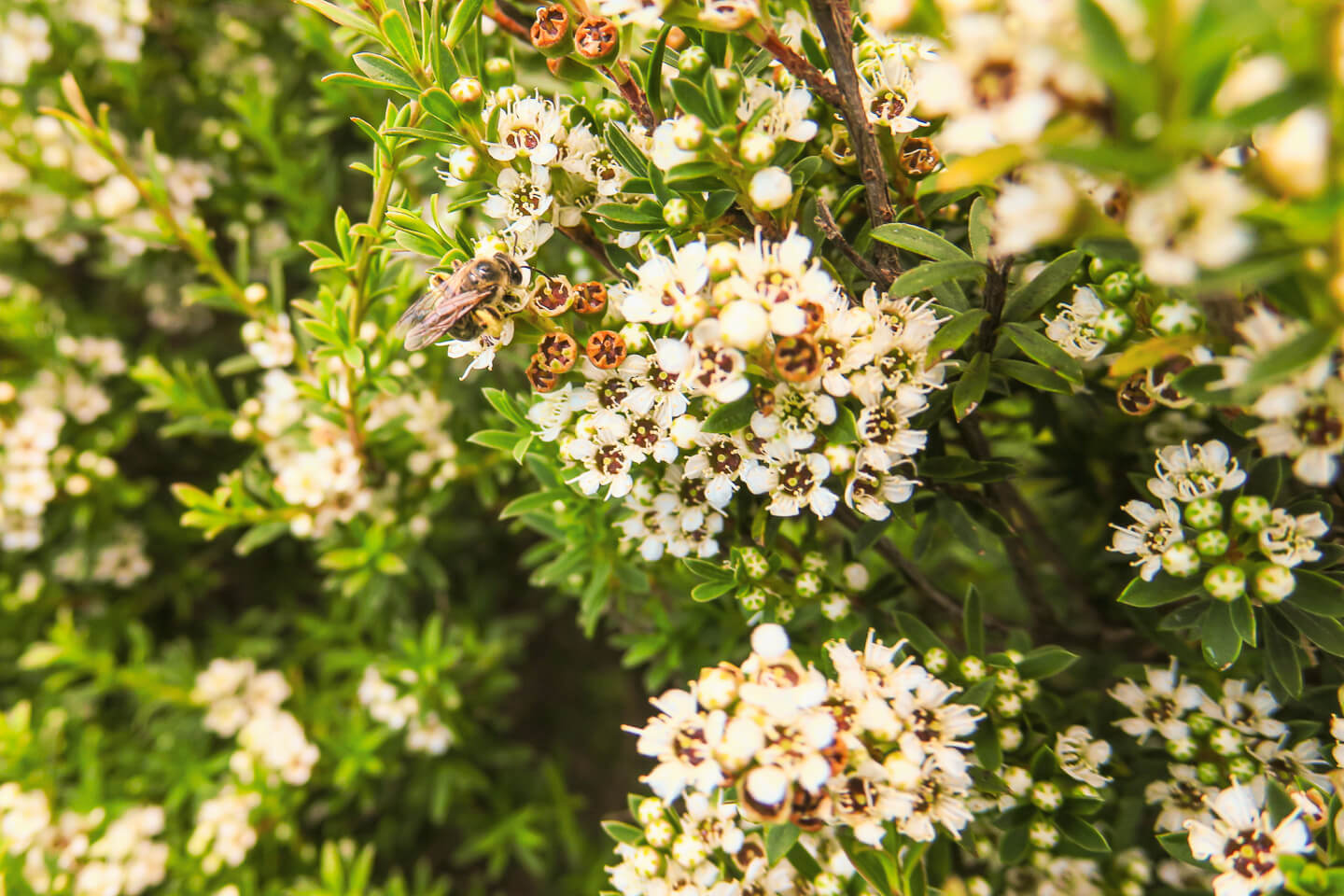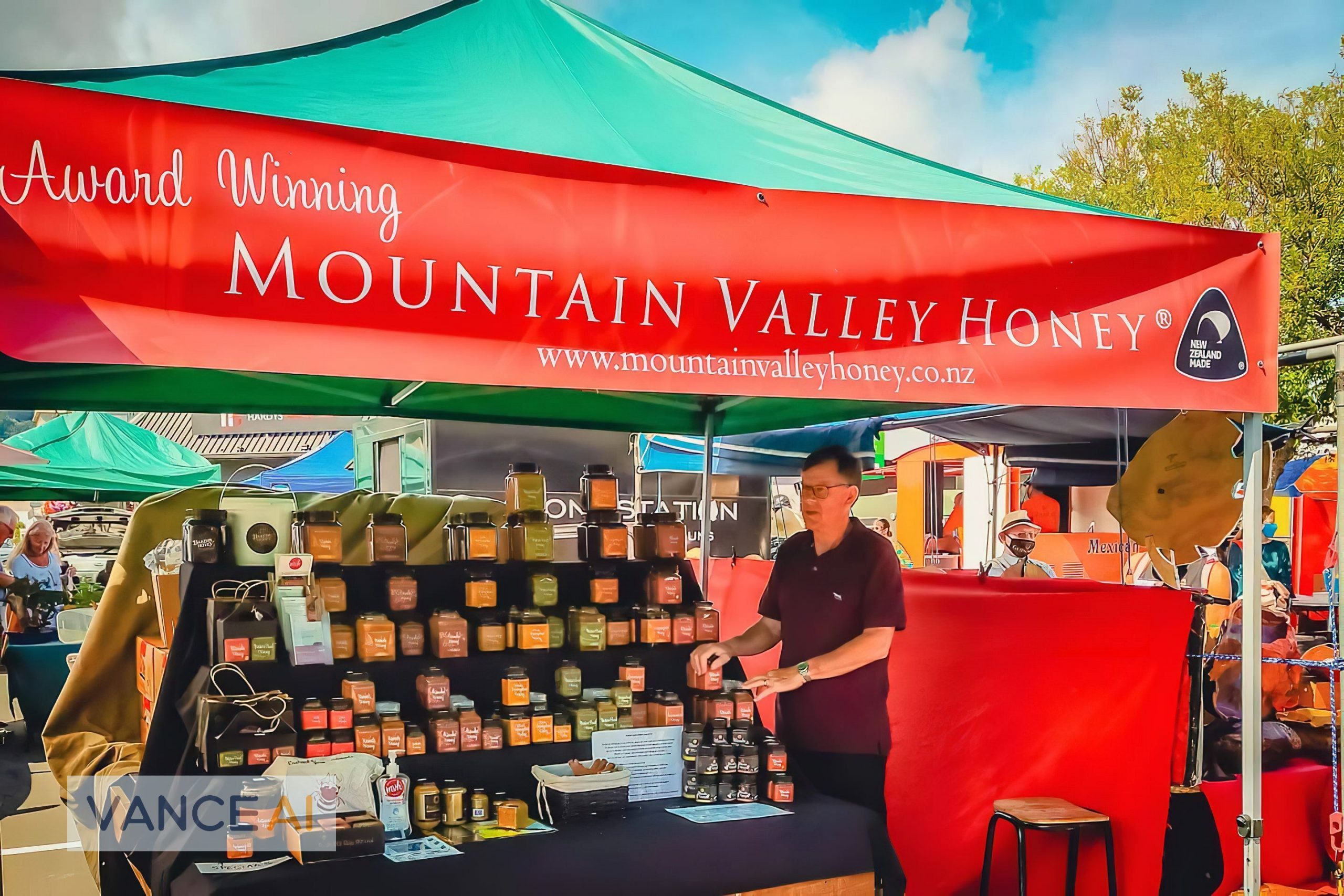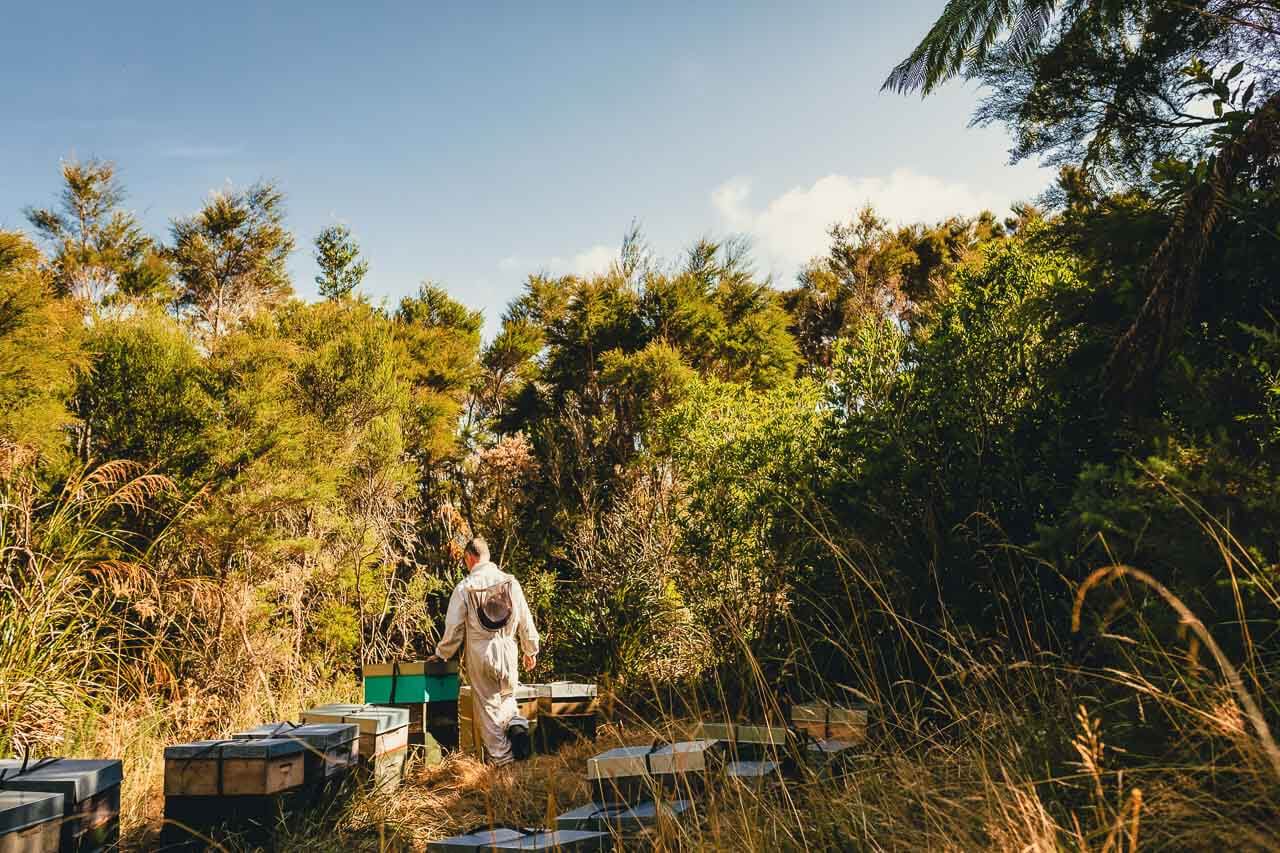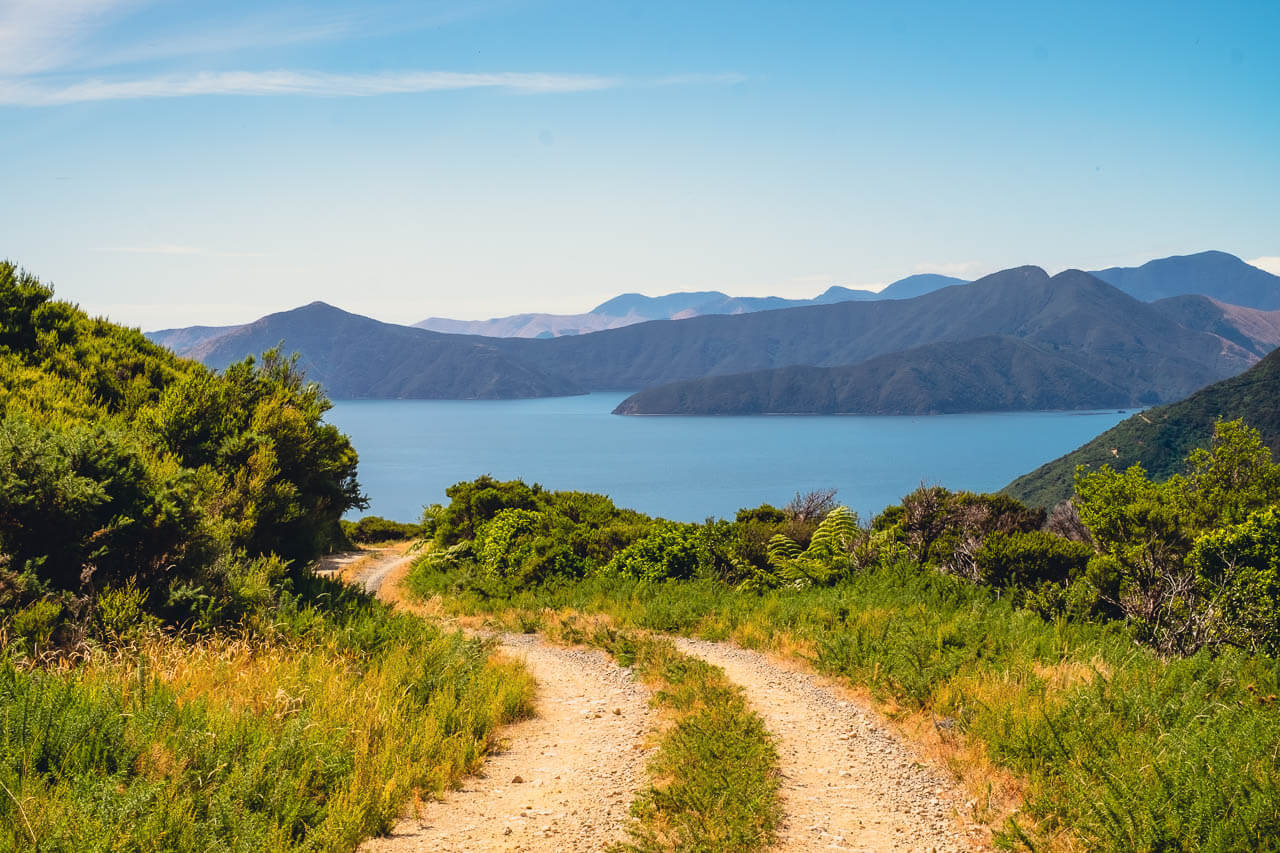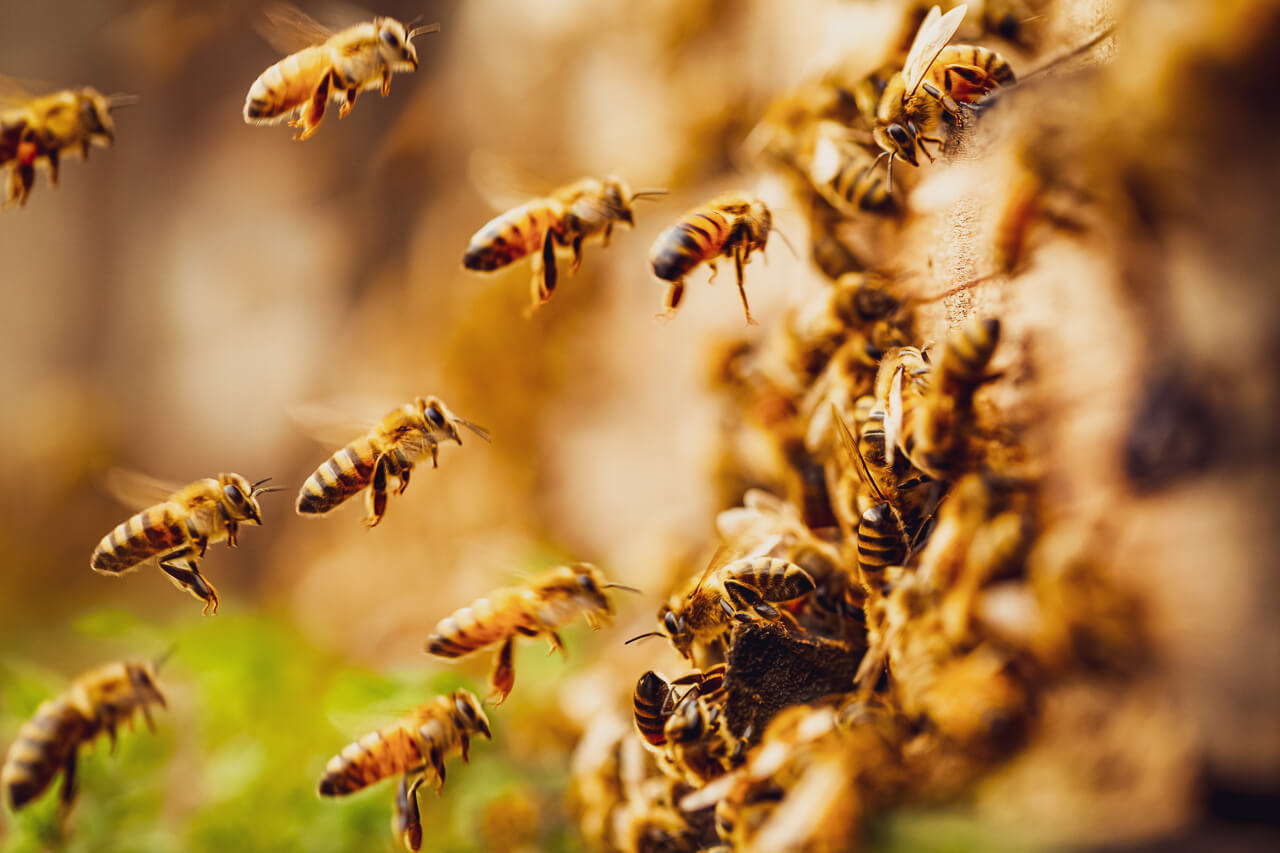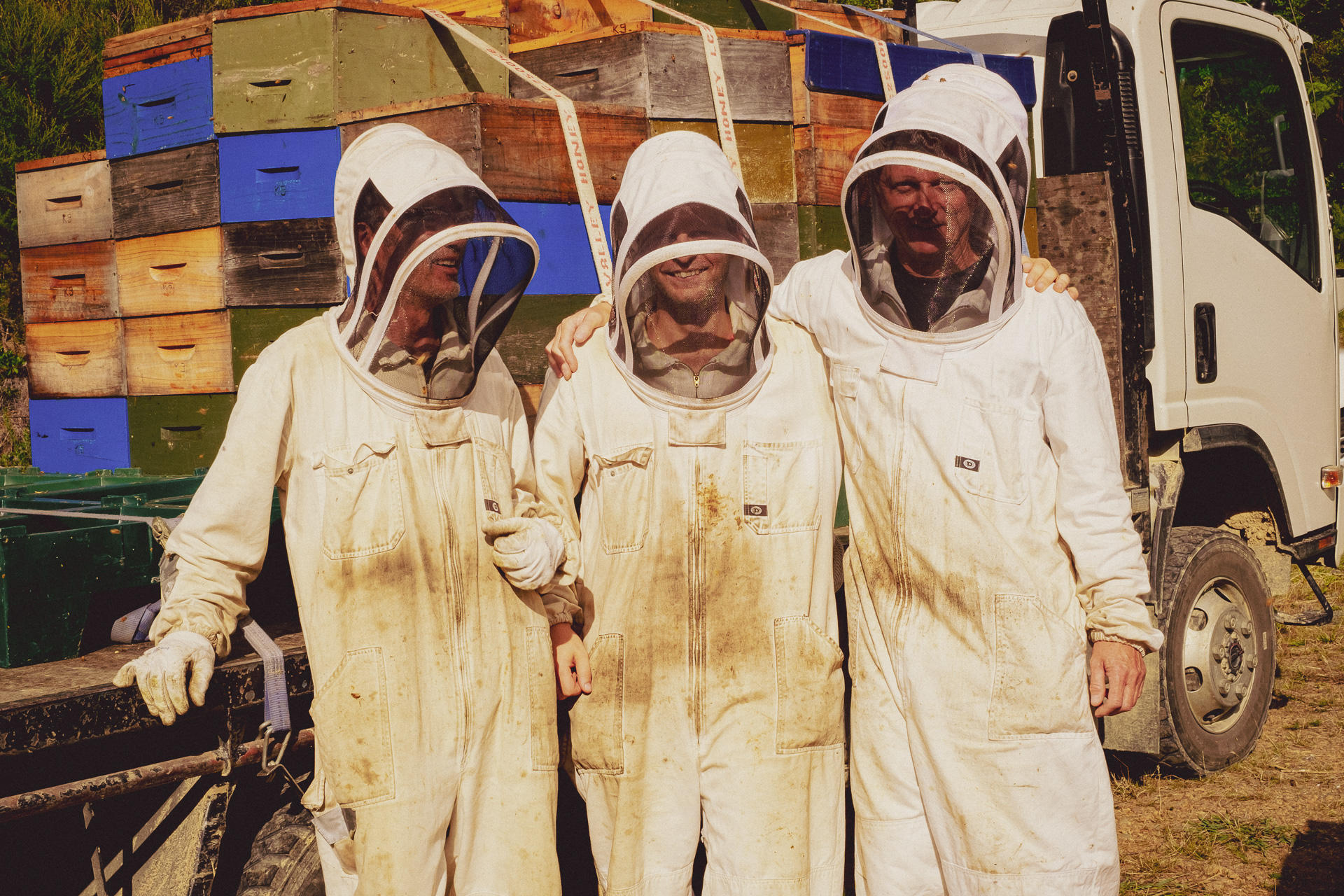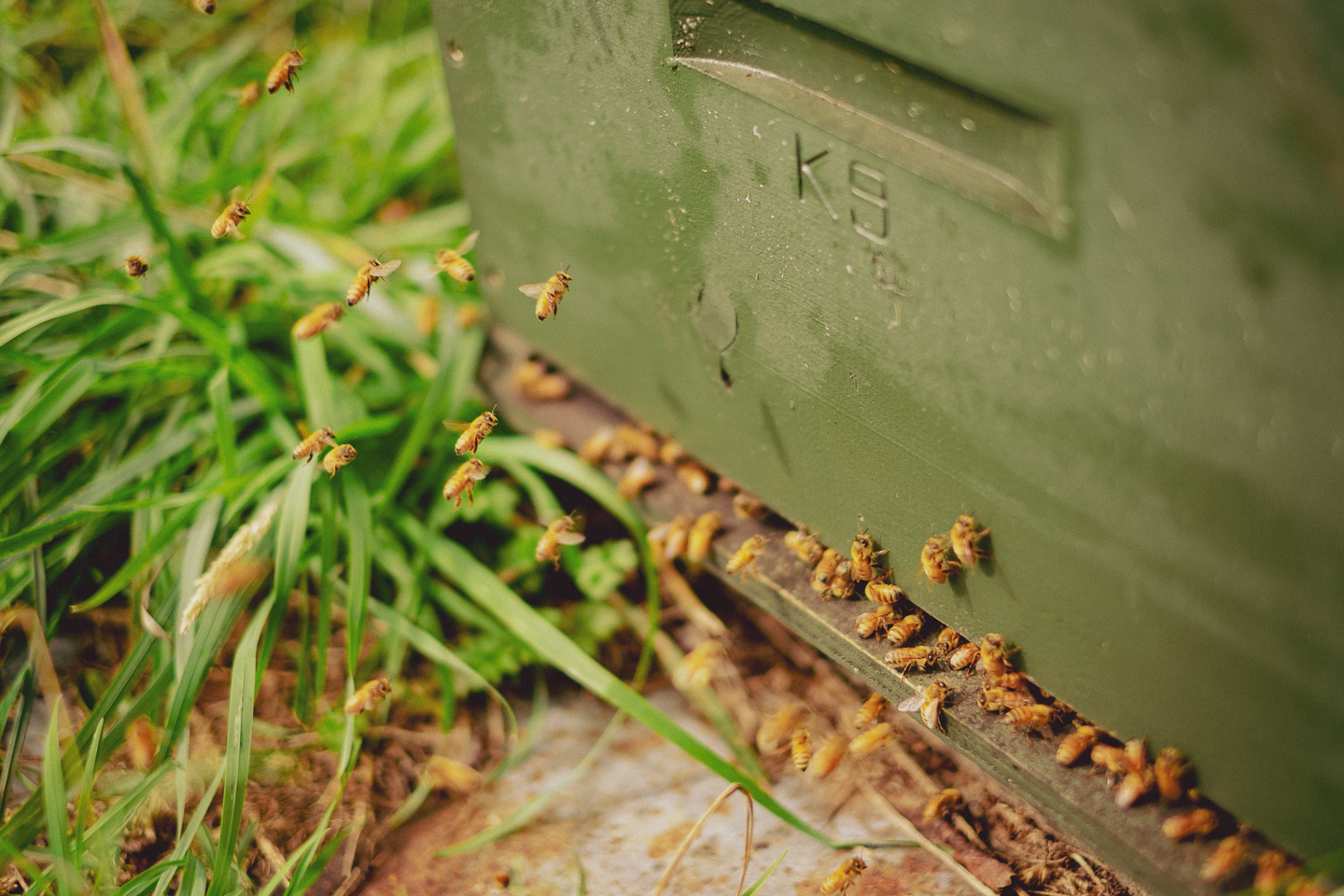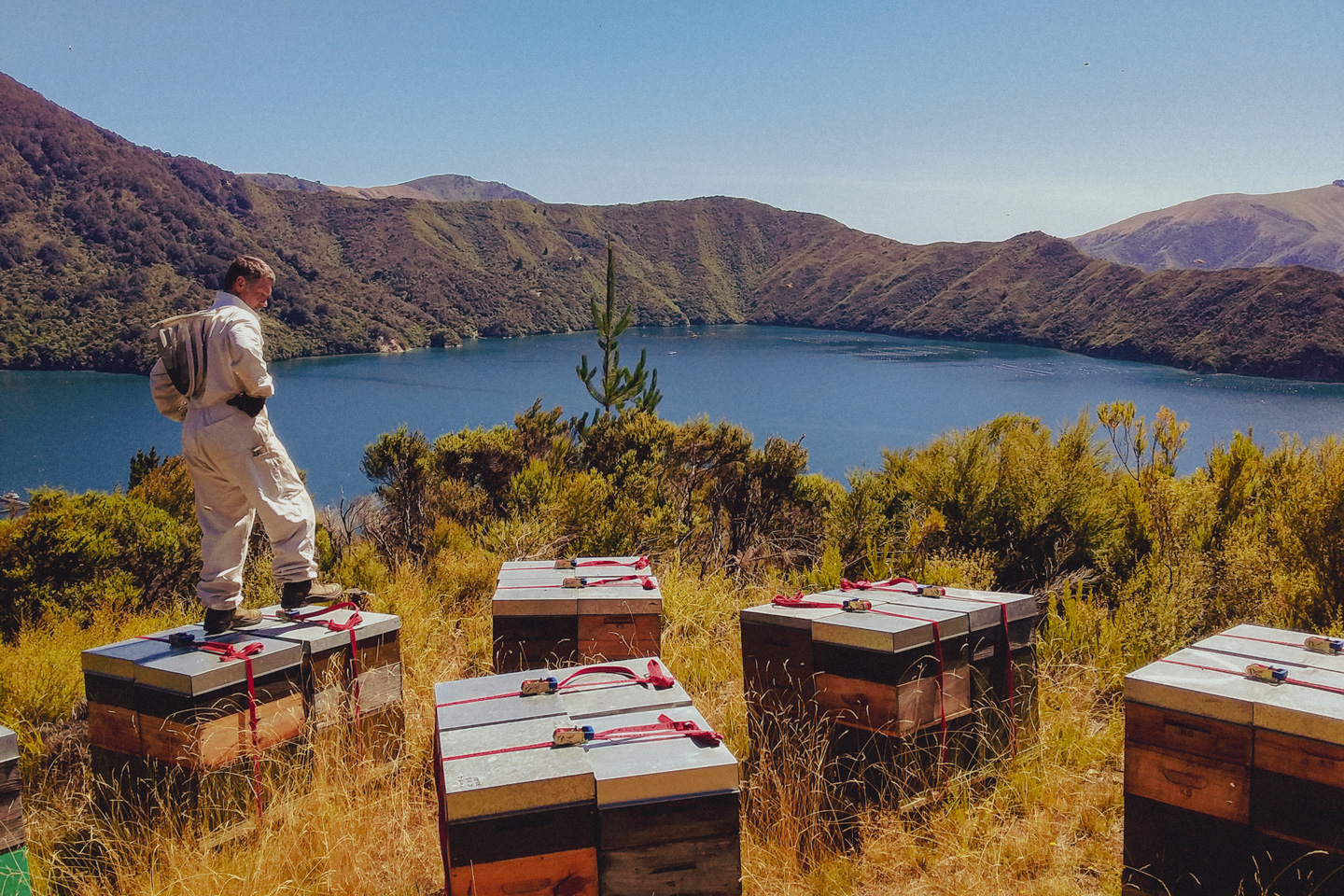Harvesting Manuka Honey from Top Secret Locations in the New Zealand Wilderness
Beekeeping doesn’t exactly spring to mind when people are asked to name an action-packed job. However, during the Mānuka honey harvest, we sometimes feel as if we are on the set of a James Bond movie — starring Murray Elwood instead of Daniel Craig.
What with the stunning mountain scenery, top-secret locations, a swooping helicopter, and the very real danger of getting a bee stuck in your hair, it certainly is an exhilarating part of our honey’s journey from the hive to the pot.

But for us, the Mānuka honey harvest is not simply some sort of high-adrenaline gold rush. We put a lot of careful thought and planning into ensuring that our harvest is sustainable, ethical and good for bees.
While the majority of our hives will remain in the same location throughout the year, in November a lucky 400 hives take a ‘special trip’ to one of the most beautiful places on earth — the Marlborough Sounds.
Our honey is named for the locations where our bees forage: high in mountain forests, and in valleys dense with native bush. Just getting to these places is quite a mission.

Every hive is located with particular care because too many hives in one area leads to under-nourished bees and an increased vulnerability to the varroa mite and associated viruses.
Because of its unique health benefits, Mānuka honey has become the darling of the world, leading to the promise of lucrative returns. Therefore there has been a dramatic increase in the numbers of hives in the Marlborough Sounds.
Fortunately, thanks to our long-standing relationships with our landowner partners, we are able to get our hives into the most secluded patches of Manuka, where the flowers are most plentiful. This results in strong, healthy hives, and also the very purest Mānuka honey.
Manuka has a brief flowering period, so timing is crucial. The honey boxes are usually full by late January to early February. The honey is ready to harvest when about 80% of cells in the honeycomb have been ‘capped’ off, or sealed with beeswax. Bees only cap honey cells when the moisture content of the honey is below 18% so that it cannot ferment.
Exactly how they know when it reaches this level is a mystery — and just one small part of the magic of working with bees.

As soon as the honey is ready, our team swings into action. The week prior to the harvest is spent closely watching the weather forecasts. We can’t fly if there is wind or fog — it is just too dangerous.
Then, when we are sure we have found the perfect window of opportunity, one team heads down to the Sounds to get set up. The following day, a second team makes its way to Helicharter Nelson — ready for a ‘crack of dawn’ take off.
Helicopters are a vital part of the harvesting operation, as they allow us to access secluded wilderness areas that simply cannot be reached otherwise. However, because we want ordinary families to be able to afford our honey, we have to make the most efficient use of fuel and time.

It really helps that Matt, from Helicharter Nelson, is such a skilled pilot. Collecting 400 hives in just a few hours, Matt has incredible control over his aircraft. He is able to place hives gently and with great precision.
Our precious bees are certainly in safe hands with Matt’s flying. If you still don’t think beekeepers are particularly heroic, just imagine having a pallet of beehives, hanging from a helicopter heading your way!
There is no doubt that one of the most exciting parts of our honey’s journey is the physical act of retrieving the honey boxes from their wilderness hideaways. And we do mean physical! It’s not just trekking into the rugged terrain that demands effort.
Each honey box is hand collected and contains 8-10 frames of honeycomb full of honey, weighing up to 25kg. Multiply that by 2500 hives located around the top of the South Island and you get some idea of how hard our team works.

But it’s not all just hard work. There is always time to stop and take in the views and appreciate the incredible beauty of the wilderness places in which we work. It’s moments like those that leave us in no doubt — we really do have the best job in the world.
And when everyone is back home safely? Well, that’s when we really get down to sticky business. But that’s the next part of the story…
